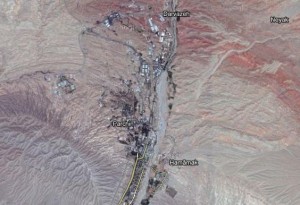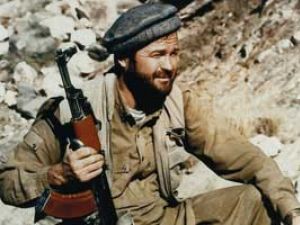I noted the other day that NYT Executive Editor Jill Abramson, in patting herself and her paper on the back for coverage that was better than the NYT coverage that got us into Iraq, totally misunderstood the frame of the debate.
To strike or not to strike is not necessarily the correct pole here, even if issues like this were as simple as Abramson’s two-sided debate. Even before you get to that question, you need to unpack the “to undermine Iran’s bid for hegemony in the Middle East to reinforce the Sunni-Israeli hegemonic position” presumption. Or even the “in spite of all our problems with Pakistan, Iran is the biggest nuke threat” presumption.
Abramson doesn’t seem to be remotely aware that, even aside from her embrace of false balance over accuracy, she’s unquestioningly embraced the stance the Administration is, for the most part, aggressively pushing, that suggesting that Iran is the biggest problem we face in the Middle East and one that must be solved.
Case in point. The NYT’s latest fear-mongering to support the presumption of anti-Iran bias is a story suggesting that Iran was sowing unrest in response to the Quran burning in Afghanistan.
Just hours after it was revealed that American soldiers had burned Korans seized at an Afghan detention center in late February, Iran secretly ordered its agents operating inside Afghanistan to exploit the anticipated public outrage by trying to instigate violent protests in the capital, Kabul, and across the western part of the country, according to American officials.
For the most part, the efforts by Iranian agents and local surrogates failed to provoke widespread or lasting unrest, the officials said. Yet with NATO governments preparing for the possibility of retaliation by Iran in the event of an Israeli attack on its nuclear facilities, the issue of Iran’s willingness and ability to foment violence in Afghanistan and elsewhere has taken on added urgency.
As Gareth Porter pointed out, there’s a problem with the entire premise. The protests we need to worry about took place not in the west, but in eastern and northern parts of Afghanistan stoked by the Haqqani network and Pakistani entities.
The protests are, rather, concentrated in the East and North, where U.S. forces are sparser, the Haqqani Network is most active, and where local factional politics have provoked violence and organized demonstrations for many years. The hand of the Haqqani Network is visible. Most demonstrations have focused on ISAF or Afghan government installations, but many protests in eastern Afghanistan specifically destroyed police checkpoints and government vehicles. Most such instances occurred in Khost province and the Chamkani and Zadran districts of Paktia province, where the Haqqani network operates and runs a madrassa system.
[snip]
Likewise, the protests in the Northern Provinces, particularly Kunduz, Takhar, and Baghlan, are familiar expressions of insurgent activity, political competition among rival factions, and Pakistan-based groups. Local religious leaders and itinerant imams, most of who were trained in Pakistan, have been the energizing force behind ethnically-mixed violent demonstrations in northern provinces such as Takhar and Kunduz, where the Haqqani Network and its affiliate, the Islamic Movement of Uzbekistan, are typically active.
You would think the lesson, then, is that Pakistani influences are more dangerous to our mission in Afghanistan. But instead, the NYT spends 1,000 words suggesting that Iran might be a threat.
And note the ineffective Quran response is not the bulk of what the NYT points to. It describes a series of other plots (including the Scary Iran Plot) which its sources admit were amateurish as proof of the need to be vigilant. It points to Iran supplying arms to “rebels and other political figures” in Yemen and to Bashar al-Assad–the former of which is a response to US and Saudi backing of the Yemeni government in its efforts to suppress rebels. And then there’s the schools and newspapers Iran has funded.
What Iran has pursued more relentlessly is an effort to pull the Afghan government away from the Americans, a strategy that has included payments to promote Iran’s interests with President Hamid Karzai.
One American intelligence analyst noted that Iran had long supported Afghan minorities, both Shiite and Sunni, and had built a network of support among Hazaras, Uzbeks and Tajiks. Iran has exercised other means of “soft power,” the analyst said, opening schools in western Afghanistan to extend its influence. The Iranians have also opened schools in Kabul and have largely financed a university attached to a large new Shiite mosque.
Iran is thought to back at least eight newspapers in Kabul and a number of television and radio stations, according to Afghan and Western officials. The Iranian-backed news organs kept fanning anti-American sentiment for days after the Koran burnings.
So we’ve got Pakistan and a range of insurgent groups fostering efforts that are getting our soldiers killed. And with the exception of one Quran-protest in Herat, we’ve got Iran funding schools and newspapers. Soft power, as the NYT admits.
And yet Iran is the country we’ve got all the sanctions against?


